

Got a Ticket to Ride on
the Internet Backbone
compiled by W. Wiesner, 'Ulysses',
the editor of 'Blueprint News', 2024
What is the internet backbone?
Like any other network, the internet consists of access links that move traffic to high-bandwidth routers
moving traffic themselves from their source over the best available path towards its destination. This core
is made up of individual high-speed fiber-optic networks that peer with each other to create what we call
the internet backbone.
The individual core networks are privately owned by Tier 1 internet service providers (ISP), some giant carriers
whose networks are tied together. Such providers include Arelion, AT&T, CenturyLink, Cogent Communications,
Deutsche Telekom, Global Telecom and Technology (GTT), NTT Communications, Sprint, Tata Communications,
as well as Telecom Italia Sparkle, Telia Carrier, and Verizon.
By joining these long-haul networks together, Tier 1 ISPs create a single worldwide network that gives all of
them access to the entire internet routing table so they can efficiently deliver traffic to its destination through
a hierarchy of progressively more local ISPs.
In addition to being physically connected, these backbone providers are held together by a shared network
protocol, TCP/IP. They are actually two protocols, transport control protocol and internet protocol, to set up
connections between computers, insuring that the connections are reliable and formatting messages into
packets.
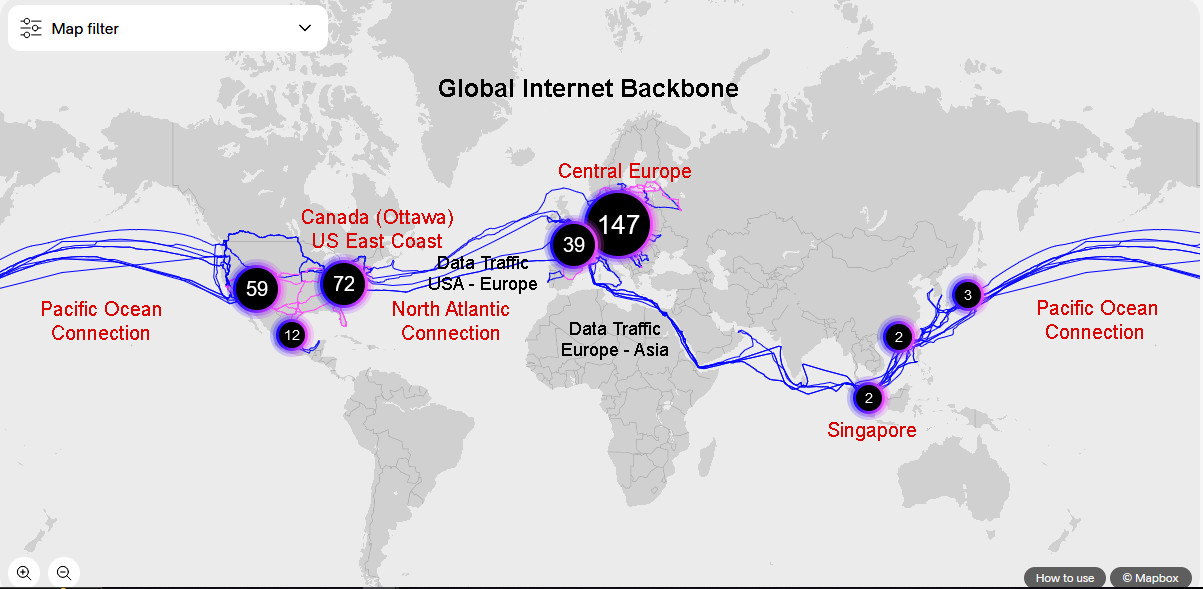
The global Tier 1 Backbone of Arelion
Below the Tier 1 ISPs are smaller Tier 2 and Tier 3 ISPs.
Local Tier 3 providers provide businesses and consumers with access to the internet. These providers have no
access of their own to the internet backbone, so would not be able to connect their customers on their own to
all of the billions of internet-attached computers.
Buying access to Tier 1 providers is expensive. Therefore, local Tier 3 ISPs contract with regional Tier 2 ISPs that
have own networks, able to deliver traffic to a limited geographic area but not to all internet-attached devices.
In order to do that, Tier 2 ISPs contract with Tier 1 ISPs for access to the global backbone, and in that way make
the entire internet accesssible to their customers.
This arrangment makes it possible to generate traffic from a single computer on one side of the world to another
one on the other side. Such, traffic goes from some source computer to a Tier 3 ISP, routing it to a Tier 2 ISP and,
from there, to a Tier 1 backbone provider. The Tier 1 then is routing it to the appropriate Tier 2 ISP, and from there,
to a Tier 3 access provider finally delivering it to the destination computer.
What about visitor statistics?
Visitor statistics, offered as a service by competing providers, might look different according to their measuring
techniques, coping with some basic difficulties of data transfer within privately owned high-speed fiber-optic
networks. Nevertheless, such different statistics might help the customers of Tier 3 providers to get additional
information about their visitors.
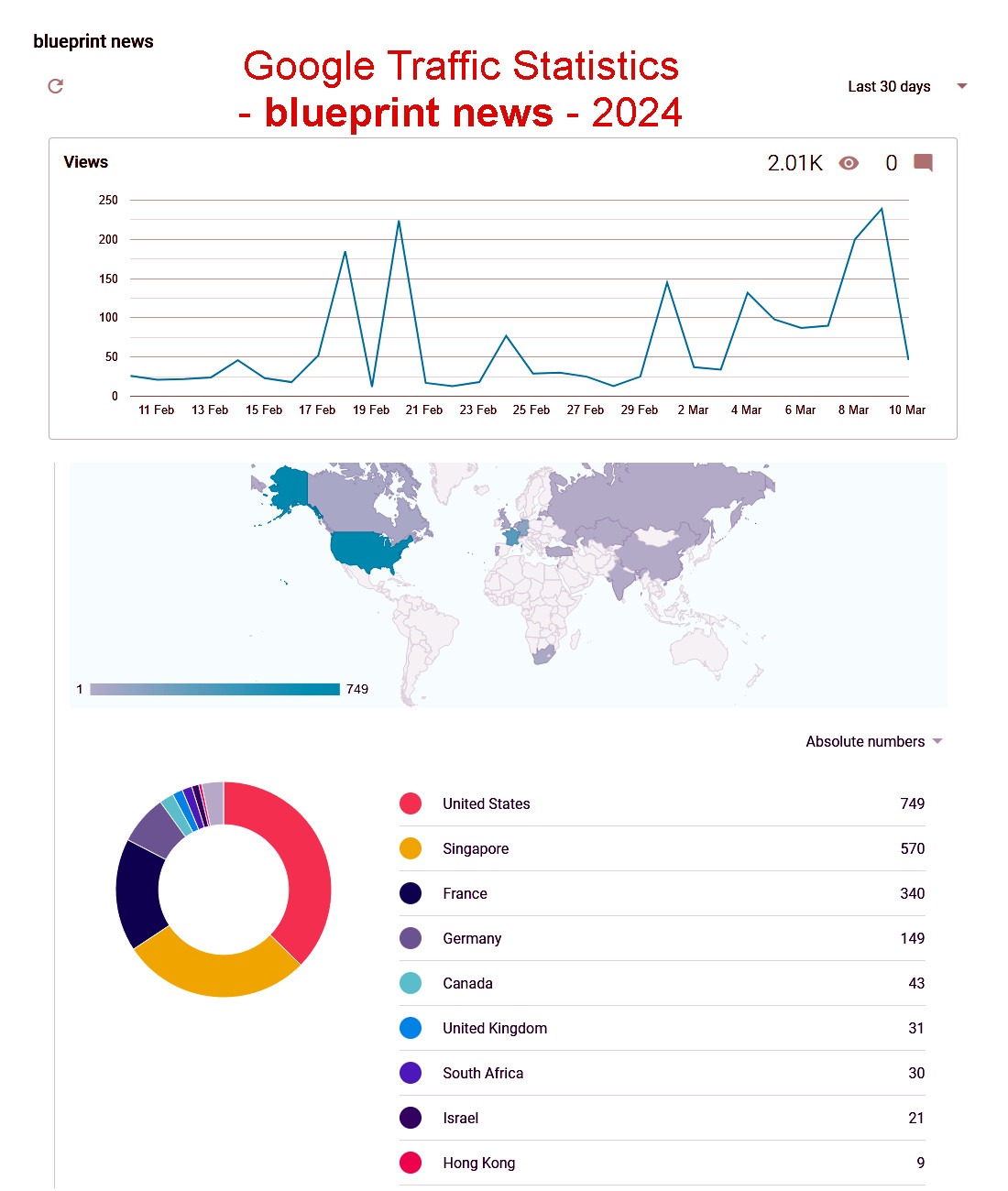
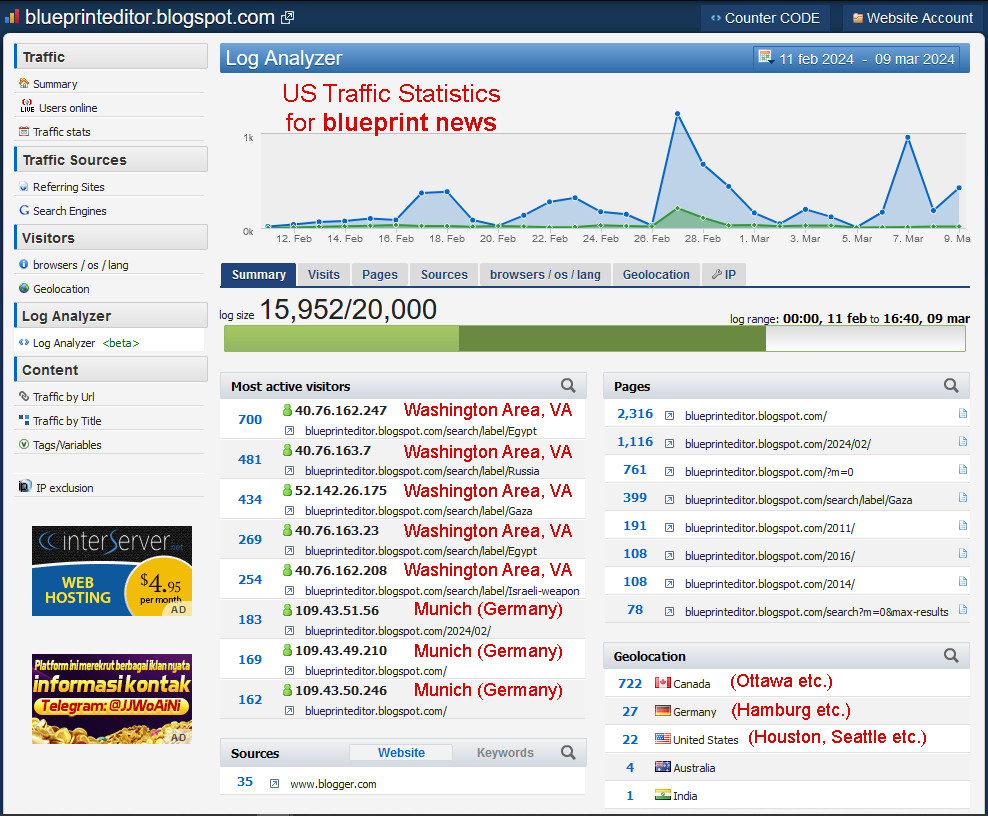
Visitor statistics generated by two providers from different global regions
for Feb 11 - Mar 09, 2024: blueprinteditor.blogspot.com - blueprint news -
US internet access points in the Washington area (local and regional) connecting to 'blueprint news'.
Regional Canadian access points diverting their request for 'blueprint news' to a regional Singapore hub.
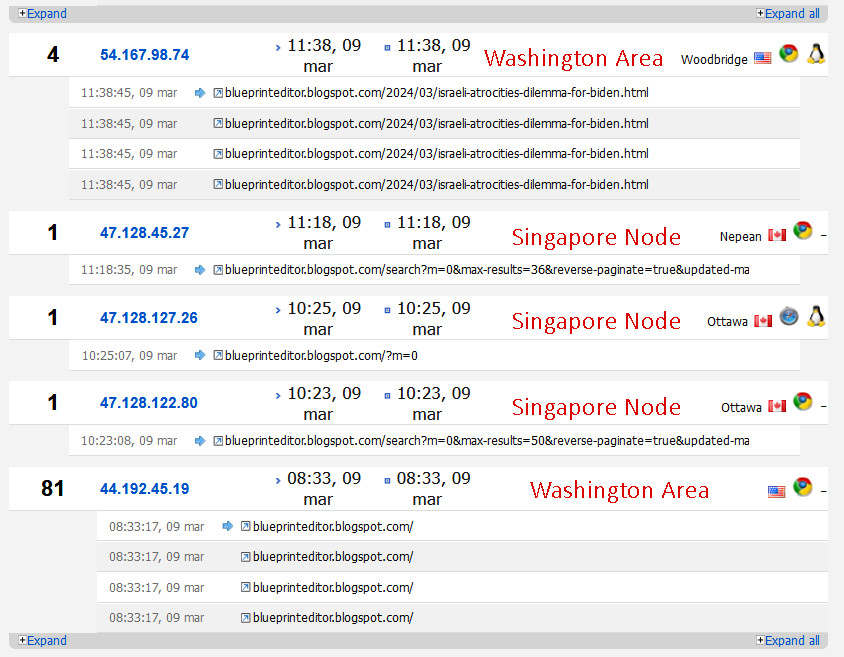
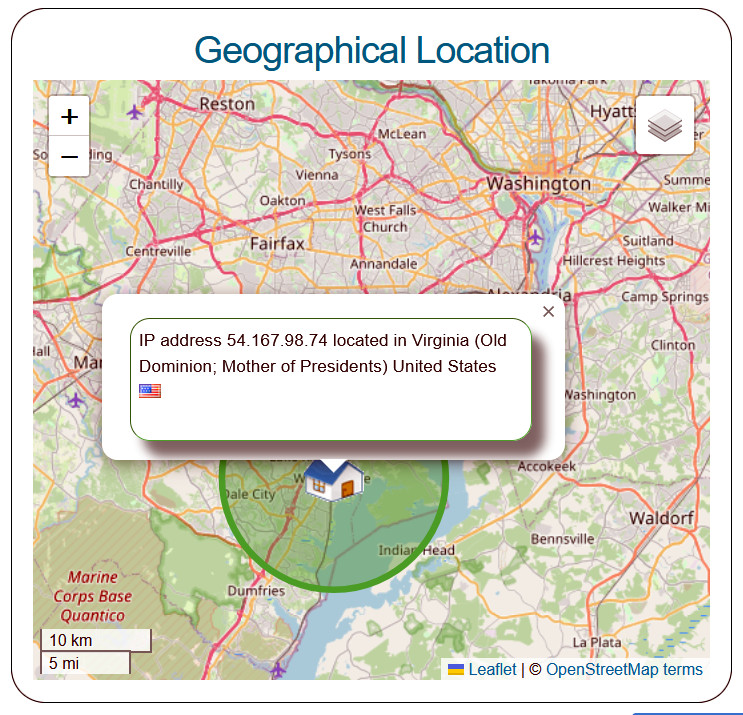
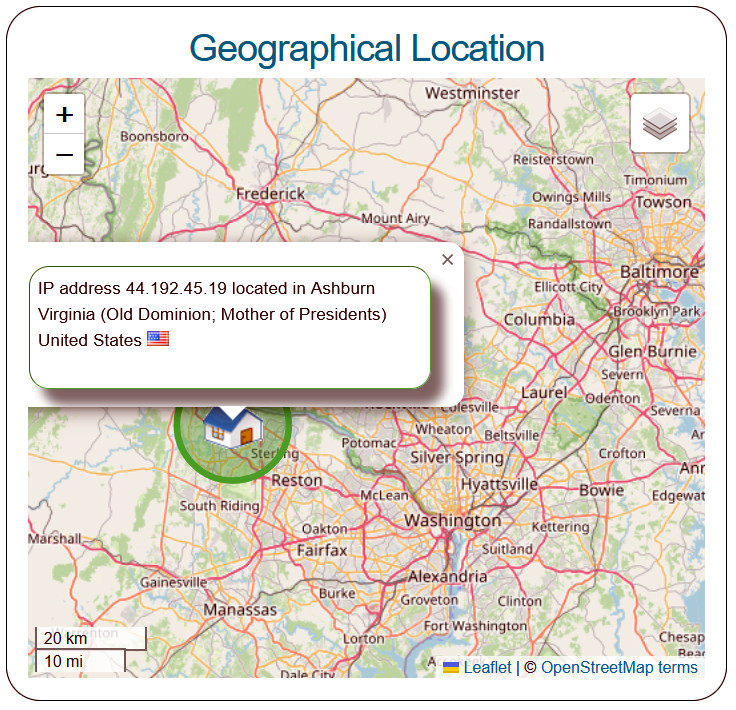
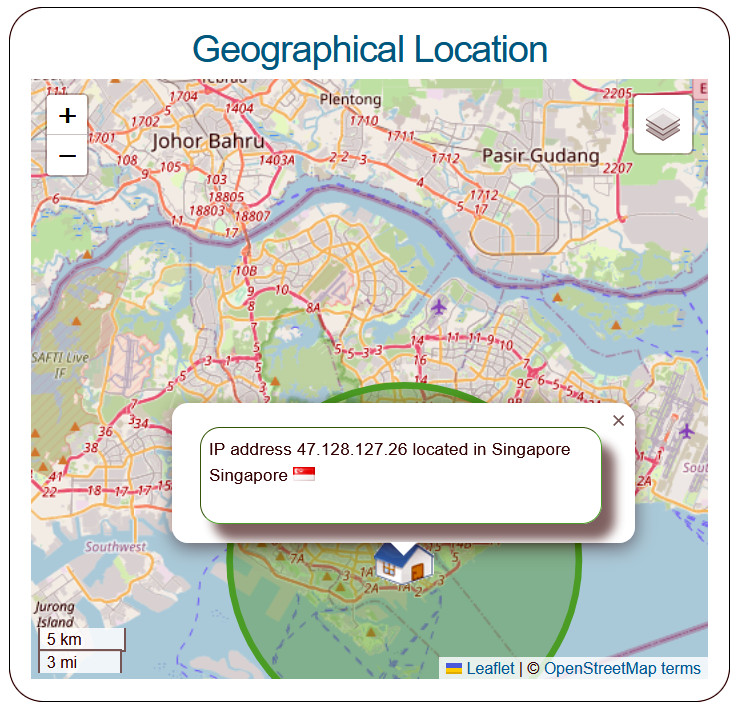
Statistics for March 9, 2024: Local access: Virginia VA, USA ............................... Regional access: Virginia VA, USA ................................... Regional access: Singapore hub
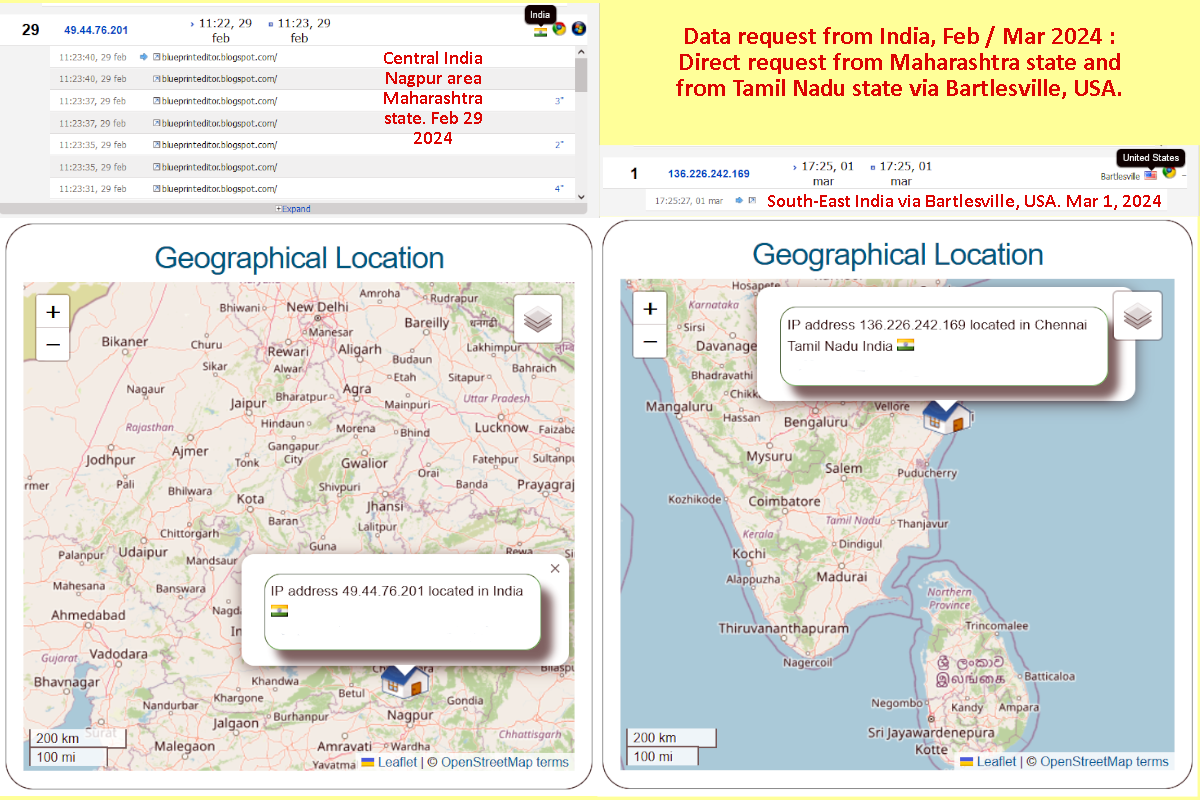
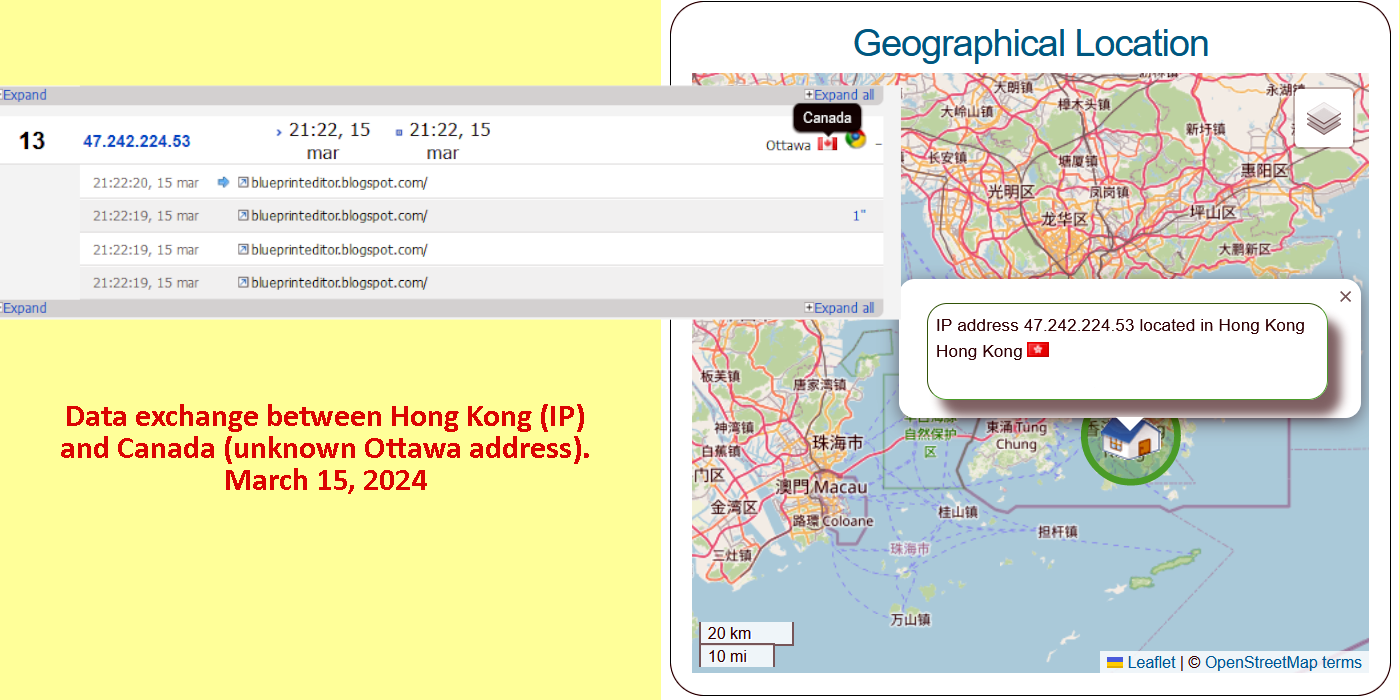
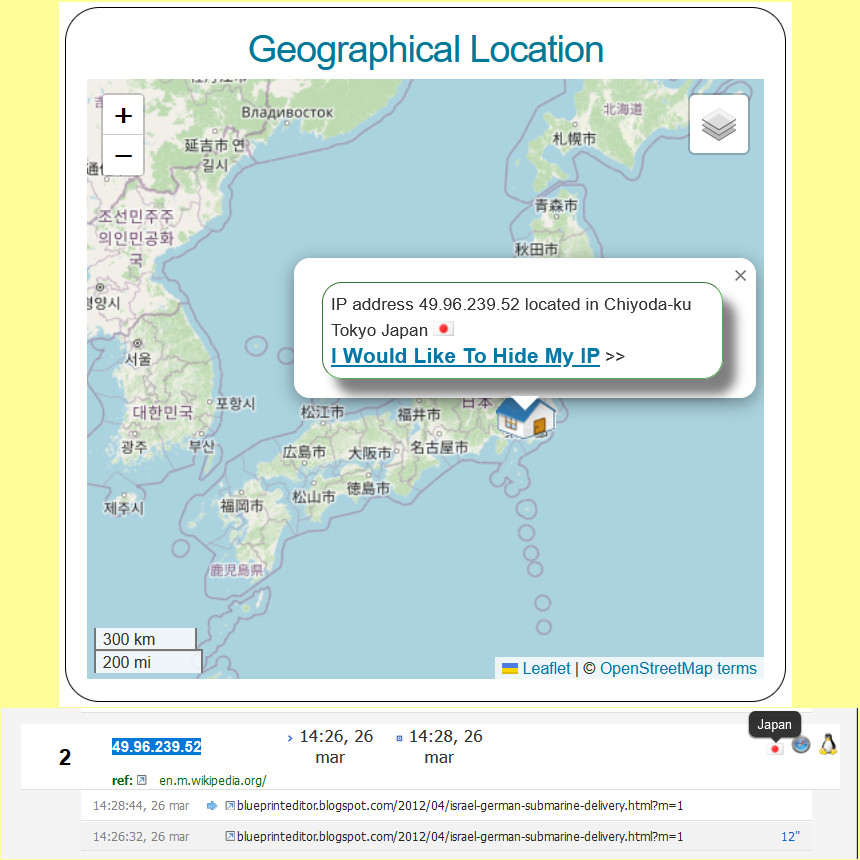
The Domain Name System (DNS) of the Internet
Each computer using the Internet Protocol is identified by a numerical IP address for identification and location addressing.
Each host is also assigned a more memorable hostname, which often relates to the purpose or ownership of the host, and
is used more conveniently in user interaction with network functions, such as when connecting to or accessing a resource.
Originally, the mapping between names and addresses was a cumbersome mechanical process using lookup tables distributed
as computer files between network administrators. The Domain Name System (DNS) solved this inefficiency by automating the
lookup function with a hierarchical naming system using domain names. When a user requests a network service using a domain
name, the protocol implementation (protocol stack) translates the name to an address that can be used to reach a remote host.
As a consequence, reverse IP address mapping and telephone number mapping have become useful tools that are available as
services provided by the nucleus of top-level domains known as the arpa domains which came into being during the first days
of the internet. From there, further groups of domains were added. These are:
Country code top-level domains (ccTLD) like cn, de, ru are generally used or reserved for a country, any sovereign state or
dependent territory identified with a country code.
Generic top-level domains (gTLDs) comprise another category of top-level domains (TLDs) maintained by the Internet Assigned
Numbers Authority (IANA) for use in the Domain Name System of the Internet. A top-level domain is the last level of every fully
qualified domain name. They are called generic for historical reasons; initially, they were contrasted with country-specific TLDs.
The core group of generic top-level domains consists of the com, net, org, biz, info domains. Some restricted domains exist as well.
In recent years, however, new gTLDs like online, top, shop, store, app are emerging. In 2023 alone, such new gTLDs witnessed a
remarkable growth of 14.7%.
The outstanding ai domain extension is asserting itself as an industry game-changer, boasting an awe-inspiring 162% year-on-year
growth rate. This significant upward trend mirrors the escalating interest and subsequent integration of Artificial Intelligence (AI)
technologies into digital platforms.













